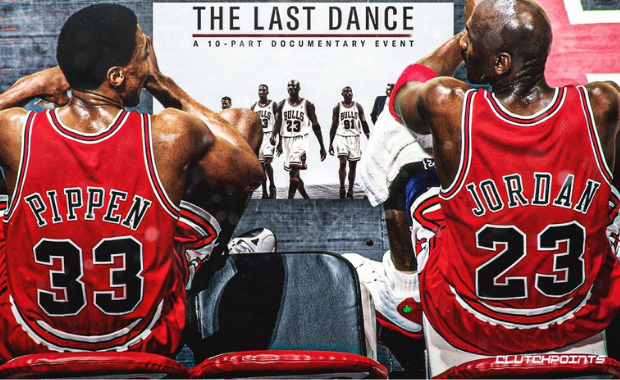Success Advice
10 Powerful Life Lessons You Can Learn From The Last Dance

The Last Dance of the Chicago Bulls in the 1990s is a documentary that chronicles the life of Michael Jordan. It narrates the story of his final season with the Chicago Bulls and where it all started. Michael Jordan is considered to be one of the greatest basketball players ever and the documentary shares a glimpse into his greatness.
Here are 10 of the most powerful lessons from the last dance:
1. Coaching/Mentorship maximizes potential
The Last Dance documentary points out all the people that helped Michael Jordan on his journey to greatness. These include his parents James and Deloris Jordan, college coach Dean Smith, personal trainer Tim Grover and Phil Jackson the Chicago Bulls coach. Without those key relationships he may not have been as successful as he was.
I remember former players like Grant Hill saying in a post Last Dance interview how they wished they could have seen the documentary at the start of their career. They realized that they could have achieved more by learning from the best in the profession. Seeking out coaches and mentors can make a difference in your life as well.
2. Faith is essential
It’s a common pattern in life that in order to achieve anything significant you must first believe that you can do it. Faith comes from understanding what you’re capable of doing and honing your skills to achieve excellence. Michael Jordan’s game throughout his career evidently showed how much faith he had in himself.
There were many stand out moments where he did the spectacular, including multiple game winning shots in big moments. His belief was evident in the first episode when asked about his prospects with the Chicago Bulls.
This is what he had to say, “I just want the franchise and the Chicago Bulls to be respected as a team; like the Lakers, or the Philadelphia 76ers, or the Boston Celtics. It’s very hard for something like that to happen but it’s not impossible. But hopefully this team and this organization can build a program like that.”
“I’ve failed over and over and over again in my life and that is why I succeed.” – Michael Jordan
3. One person can start a movement
Prior to Michael Jordan’s arrival, the Chicago Bulls were known as a traveling cocaine circus. The team wasn’t popular at the time with most Chicago citizens preferring to watch other sports. Game attendance for the Chicago Bulls games was about a third of the total capacity.
When Michael Jordan got drafted in the 1984 NBA draft, the narrative of the Chicago Bulls team suddenly changed. He brought a new energy to not just the team but the city of Chicago as a whole. Game tickets started to sell out from that season as the franchise realized they had one of the best talents.
4. It takes a team to win big
In spite of the shot in the arm Jordan brought to Chicago, his effort alone wasn’t enough to win championships. Talentwise, Michael Jordan was the best in the league as he won all individual accolades early in his career. His less talented counterparts like Magic Johnson and Larry Bird were winning titles in the process.
It took Michael time to realize he had to trust his teammates and management to become a championship caliber team. General Manager Jerry Krause played a key part by getting the right players and ultimately the right coach in Phil Jackson. Some of the key players in the dynasty were Scottie Pippen, Dennis Rodman, Horace Grant, John Paxson and Bill Cartwright.
5. Document your life
The documentary itself is a powerful illustration of documenting life and lessons learned along the way. Your life story is worth recording for future generations to learn from both your positive and negative experiences. This is how life lessons are commonly passed on from generation to generation to ensure continuity of a standard of excellence.
The documentary chronicles his life from the time he was a teenager in high school. We learned about his family, friends, agent, and coaches that made a contribution to his life. In the same way you must record life events and the lessons learned along the way for future generations.
6. Let your skills do the talking
Unlike average performers who talk more than they do, Michael Jordan did the opposite. He focused on developing his skills to earn his respect instead of just talking a big game. “From the first day in practice, my mentality was whoever is the team leader on that team, I’m going after him. And I’m not going to do it with my voice because I had no voice, I had no status. I had to do it with the way that I play,” said Michael in Episode 1 of the documentary.
In whatever you do in life, focus more on doing and less on talking. It’s the results you produce that speak loudest after all is said and done.
7. Explore your passions
Michael Jordan enjoyed all kinds of sports as a young kid. He tried them all and narrowed down to basketball and baseball which his father loved. During his first retirement from basketball after his father’s death, he went to play baseball for the Chicago White Sox.
Though he played for about eighteen months, he improved so much that he could have gone on to be a pro. In the same way, try out all the things you’re passionate about until you zero in on what you’ll be most successful at.
8. Practice like it’s game time
One of the things that separated those Bulls’ teams from other teams in the league was their dedication. For Michael Jordan and his teammates, practice sessions were more intense than actual games. Their reasoning was that by the time you got to the game, you would know instinctively what to do.
Practicing like they were in a real game put them way ahead of their counterparts. This is one of the most valuable lessons you can grasp from this team. Whatever you do in life, give it your best as though you were doing work for a client.
“I know fear is an obstacle for some people, but it is an illusion to me. Failure always made me try harder the next time.” – Michael Jordan
9. Winning has a price
In the documentary Michael Jordan said, “Winning has a price!” For him that meant learning to trust his teammates instead of doing it all by himself among other things. Part of the price he had to pay was being misunderstood as a person.
By his standards, he wanted everyone on his team to win which meant pushing them hard. Some people saw him as a tyrant as a result because they didn’t understand what it took to win. The more successful you become, the more people will misunderstand you. It’s a price you have to pay.
10. Adversity can lead to breaking records
Jordan faced many obstacles in his career but most of them led to record breaking results. His team was the first to win three straight championships in 27 years and they did it twice in a decade. He set numerous other records throughout his career. Adversity has the capacity to influence that if you allow it to.
Which of the lessons resonate with you the most? Let us know in the comments below!
Shift Your Mindset
11 E’s That Define Every Great Leader And Why Most People Miss Them
If you’ve ever felt the pull to lead, this is your roadmap to turning inner potential into lasting influence.

What Is Leadership, Really?
Leadership is far more than a title or position. It’s the ability to envision a future, inspire others, and align people toward a shared goal. (more…)
Personal Development
This Silent Habit Might Be Sabotaging Your Career
Your temper might be costing you more at work than you realize. Here’s why it matters.

You may be the last to know that you’re walking around with a giant chip on your shoulder. Meanwhile, your coworkers are giving you a wide berth. (more…)
Change Your Mindset
The One Leadership Habit That Separates the Great From the Forgettable
True leaders don’t just speak their values, they live them, proving that integrity is the foundation of lasting influence.

Leadership isn’t defined by titles, speeches, or charisma; it’s defined by action. The most respected leaders in history didn’t just preach their values; they lived them. (more…)
Success Advice
Inside the TikTok Resume Hack That’s Fooling Recruiters (For Now)
A viral TikTok resume trick promises interviews overnight, yet one wrong move could blacklist you from future jobs.

Your job hunt has stalled out. After weeks of submitting online applications, you haven’t had a nibble. (more…)
-

 Business4 weeks ago
Business4 weeks agoThinking of Buying A Business? These 6 Sectors Quietly Produce the Best Deals
-

 Change Your Mindset3 weeks ago
Change Your Mindset3 weeks agoWork-Life Balance Isn’t a Myth: Here’s How to Actually Make It Happen
-

 Change Your Mindset4 weeks ago
Change Your Mindset4 weeks agoThe Four Types of Happiness: Which One Are You Living In?
-

 Life3 weeks ago
Life3 weeks ago9 Harsh Truths Every Young Man Must Face to Succeed in the Modern World
-

 Success Advice2 weeks ago
Success Advice2 weeks agoInside the TikTok Resume Hack That’s Fooling Recruiters (For Now)
-

 Change Your Mindset2 weeks ago
Change Your Mindset2 weeks agoThe One Leadership Habit That Separates the Great From the Forgettable
-

 Personal Development1 week ago
Personal Development1 week agoThis Silent Habit Might Be Sabotaging Your Career
-

 Business5 days ago
Business5 days agoWhy Your E-Commerce Fulfilment Is Probably Broken (And How to Fix It)























